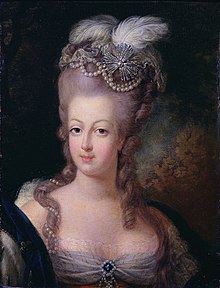Pietro Bracci - sculptor
Artist best known for Oceanus statue at Trevi Fountain
The sculptor Pietro Bracci, who left his mark on the architectural landscape of Rome with the colossal six-metre high statue Oceanus that towers over the Trevi Fountain, was born on this day in 1700 in Rome. The monumental figure is shown standing on a chariot, in the form of a shell, pulled by two winged horses flanked by two tritons. Bracci worked from sketches by Giovanni Battista Maini, who died before he could execute the project. He also completed work on the fountain itself, built in front of Luigi Vanvitelli’s Palazzo Poli. This was started by Bracci’s close friend Nicola Salvi, who had been commissioned by Pope Clement XII to realize plans drawn up by Gian Lorenzo Bernini that had been shelved in the previous century. Salvi died in 1751, before he could complete the work. Giuseppe Pannini was also involved for a while before Bracci took over in 1761. The work confirmed Bracci as a major talent of his time in the field of sculpture, one of the greatest of the late Baroque period, continuing in the tradition established by Bernini in the previous century that gave the city of Rome so many wonderful monuments. Read more…
_____________________________________
Achille Lauro - shipping magnate and politician
Businessman once dubbed the ‘Neapolitan Onassis’
The businessman and politician Achille Lauro, who at his peak controlled the largest private shipping fleet in the Mediterranean and whose achievements as Mayor of Naples included building the San Paolo football stadium and the city’s main railway station, was born on this day in 1887 in Piano di Sorrento in Campania. Lauro inherited a small number of ships from his father, Gioacchino, but lost them at the start of the First World War, when they were requisitioned by the government. When the conflict ended he had no money but managed to launch another fleet by creating a company that was essentially owned by its employees, who invested their savings in return for a share of the profits and a guarantee of employment. Within little more than a decade, Flotta Lauro consisted of 21 vessels. Lauro's business plan avoided the union problems that were prevalent in the 1920s as his staff concentrated on making the business profitable, knowing that they would benefit too. The company became renowned both for reliable service and punctuality and grew rapidly. By the 1930s Lauro owned the largest private fleet in the Mediterranean basin. Read more…
_____________________________________
Giacomo Agostini - world motorcycle champion
Brescia-born rider enjoyed record-breaking career
Giacomo Agostini, 15 times Grand Prix world motorcycling champion, was born on this day in 1942 in Brescia. Agostini moved with his family to the lakeside town of Lovere, which overlooks the picturesque Lago d'Iseo, when he was 13. Riding for the Italian MV Agusta team, Agostini won the 500cc class seven times in a row from 1966 to 1972 and the 350cc class seven times in succession from 1968 to 1974, adding a further 500cc title on a Yamaha in 1975. His total of 122 Grand Prix wins from 1965 to 1976 is the highest by any rider in the history of the sport. Agostini, considered perhaps the greatest motorcycle racer of all time, was at the peak of his powers between 1967 and 1970. In 1967, he won an epic duel with his former MV Agusta teammate, Britain's Mike Hailwood, who was riding for Honda. They were tied on five race wins each going into the final GP of the season in Canada, where Hailwood won, with his rival second. That meant they were tied on points and wins, but Agostini had a greater number of second place finishes and so he was crowned champion. For the next three seasons, after Hailwood left motorcycle racing to race cars, Agostini dominated. Read more…
_______________________________________
Mario Rigoni Stern – author
Brave soldier became a bestselling novelist
The novelist Mario Rigoni Stern, who was a veteran of World War II, died on this day in 2008 in Asiago in the Veneto region. His first novel, Il sergente della neve - The Sergeant in the Snow - was published in 1953. It drew upon his experiences as a sergeant major in the Alpine corps during the disastrous retreat from Russia in the Second World War. It became a best seller and was translated into English and Spanish. Rigoni Stern had been a sergeant commanding a platoon in Mussolini’s army in the Soviet Union during the retreat of the Italians in the winter of 1942. His book was inspired by how he succeeded in leading 70 survivors on foot from Ukraine into what was then White Russia - now part of Belarus - and back to Italy. It won the Viareggio Prize for best debut novel and went on to sell more than a million copies. At the time the author said it was not written to claim a role for him as a hero, but as a tribute to his fellow soldiers and the ordinary Russians who gave them shelter. Rigoni Stern was born in Asiago in the Veneto and became a cadet at the military academy at Aosta in 1938. Read more…
.jpg)
.jpg)
.jpg)


.jpg)

.jpg)
.jpg)

_-_ritr._A_Ferrazzi,_Recanati,_casa_Leopardi.jpg)






.jpg)




.jpg)
.png)
.png)

.jpg)
